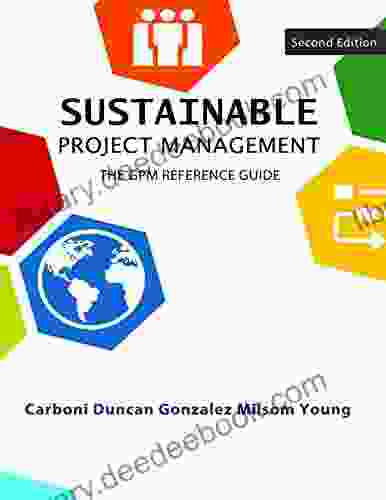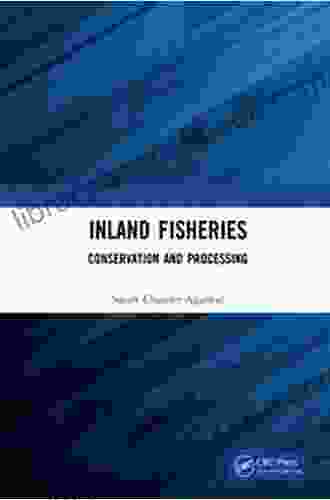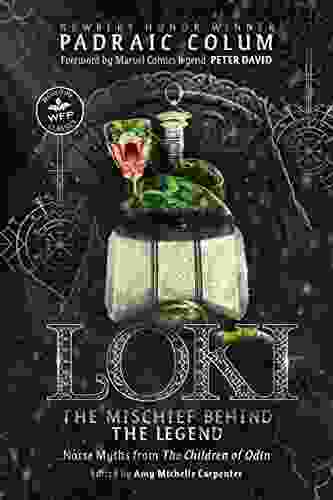Inland Fisheries Conservation and Processing: A Comprehensive Guide

4.6 out of 5
| Language | : | English |
| File size | : | 24292 KB |
| Screen Reader | : | Supported |
| X-Ray | : | Enabled |
| Print length | : | 428 pages |
| Paperback | : | 182 pages |
| Item Weight | : | 9 ounces |
| Dimensions | : | 6 x 0.41 x 9 inches |
| X-Ray for textbooks | : | Enabled |
Inland fisheries are a vital source of food, livelihood, and recreation for millions of people around the world. They provide a significant portion of the global fish supply and play an important role in local economies and cultures. However, inland fisheries are facing increasing threats from habitat loss, pollution, and overfishing. These threats are putting the sustainability of inland fisheries at risk and jeopardizing the livelihoods of millions of people.
Inland fisheries conservation and processing are essential to ensuring the long-term sustainability of these fisheries. Conservation measures can help to protect and restore fish habitats, reduce pollution, and prevent overfishing. Processing techniques can add value to fish products, making them more marketable and profitable. By combining conservation and processing efforts, we can help to ensure that inland fisheries continue to provide food, livelihoods, and recreation for future generations.
Inland Fisheries Conservation
Inland fisheries conservation is the practice of protecting and restoring fish habitats, reducing pollution, and preventing overfishing. These measures are essential to ensuring the long-term sustainability of inland fisheries. Sustainable fishing practices can help to prevent overfishing and ensure that fish populations remain healthy. Habitat restoration can help to create and improve fish habitats, making them more productive and resilient to environmental disturbances.
Sustainable Fishing Practices
Sustainable fishing practices are designed to minimize the impact of fishing on fish populations and their habitats. These practices include using selective fishing gear that targets specific species and sizes of fish, avoiding fishing during spawning seasons, and establishing catch limits. By following sustainable fishing practices, we can help to prevent overfishing and ensure that fish populations remain healthy for future generations.
Habitat Restoration
Habitat restoration is the process of creating or improving fish habitats. This can be done through a variety of methods, such as planting trees and shrubs to provide shade and cover, creating wetlands to provide spawning and nursery grounds, and installing structures to improve water flow and oxygen levels. Habitat restoration can help to increase fish production and make fish populations more resilient to environmental disturbances.
Reducing Pollution
Pollution can have a devastating impact on inland fisheries. Pollutants can kill fish, damage their habitats, and make them unsafe for human consumption. Pollution sources include agricultural runoff, industrial wastewater, and sewage. We can help to reduce pollution by using fertilizers and pesticides responsibly, properly disposing of waste, and supporting efforts to clean up polluted waterways.
Inland Fisheries Processing
Inland fisheries processing is the process of converting raw fish into products that are safe and marketable. Processing techniques can add value to fish products, making them more desirable to consumers and more profitable for fishermen. Common processing techniques include filleting, freezing, canning, and smoking. By using value-added processing techniques, we can help to increase the profitability of inland fisheries and make fish products more accessible to consumers.
Filleting
Filleting is the process of removing the bones and skin from fish. This produces a boneless, skinless fillet that is ready to be cooked and eaten. Fillets are a popular product because they are easy to prepare and cook. They can be fried, baked, grilled, or poached.
Freezing
Freezing is a method of preserving fish by freezing it at very low temperatures. This inhibits the growth of bacteria and other microorganisms that can cause spoilage. Frozen fish can be stored for long periods of time and is a convenient way to preserve fish for future use.
Canning
Canning is a method of preserving fish by sealing it in airtight cans. This process kills bacteria and other microorganisms and prevents spoilage. Canned fish is a shelf-stable product that can be stored for long periods of time. It is a convenient
4.6 out of 5
| Language | : | English |
| File size | : | 24292 KB |
| Screen Reader | : | Supported |
| X-Ray | : | Enabled |
| Print length | : | 428 pages |
| Paperback | : | 182 pages |
| Item Weight | : | 9 ounces |
| Dimensions | : | 6 x 0.41 x 9 inches |
| X-Ray for textbooks | : | Enabled |
Do you want to contribute by writing guest posts on this blog?
Please contact us and send us a resume of previous articles that you have written.
 Book
Book Novel
Novel Page
Page Text
Text Genre
Genre Library
Library Magazine
Magazine Paragraph
Paragraph Shelf
Shelf Bibliography
Bibliography Foreword
Foreword Preface
Preface Synopsis
Synopsis Annotation
Annotation Scroll
Scroll Codex
Codex Tome
Tome Classics
Classics Biography
Biography Dictionary
Dictionary Thesaurus
Thesaurus Narrator
Narrator Character
Character Librarian
Librarian Card Catalog
Card Catalog Borrowing
Borrowing Archives
Archives Periodicals
Periodicals Study
Study Research
Research Lending
Lending Reserve
Reserve Interlibrary
Interlibrary Literacy
Literacy Study Group
Study Group Storytelling
Storytelling Awards
Awards Book Club
Book Club Theory
Theory Textbooks
Textbooks Robert B Mccormick
Robert B Mccormick Stephanie Hughes
Stephanie Hughes Bobby Braddock
Bobby Braddock Janine Joseph
Janine Joseph Tatiana Boncompagni
Tatiana Boncompagni Chris Mares
Chris Mares Lisa Moser
Lisa Moser Dima Alzayat
Dima Alzayat Doland Bryer
Doland Bryer John Clifton
John Clifton Charles Kane
Charles Kane Venus Green
Venus Green Peter Ackroyd
Peter Ackroyd Mina Lee
Mina Lee Norman K Wright
Norman K Wright Melanie Randolph Miller
Melanie Randolph Miller Fintan O Toole
Fintan O Toole Robert Kowalski
Robert Kowalski E R Fallon
E R Fallon Rory Miller
Rory Miller
Light bulbAdvertise smarter! Our strategic ad space ensures maximum exposure. Reserve your spot today!
 VoltaireFollow ·10.3k
VoltaireFollow ·10.3k Ken FollettFollow ·8.9k
Ken FollettFollow ·8.9k Bryson HayesFollow ·11.9k
Bryson HayesFollow ·11.9k Mark TwainFollow ·19.1k
Mark TwainFollow ·19.1k Emanuel BellFollow ·17.4k
Emanuel BellFollow ·17.4k Timothy WardFollow ·15.2k
Timothy WardFollow ·15.2k Jeffrey CoxFollow ·14.4k
Jeffrey CoxFollow ·14.4k Jamie BellFollow ·12.3k
Jamie BellFollow ·12.3k

 Ralph Ellison
Ralph EllisonHealth Care Global Viewpoints: Samantha Whiskey
Samantha Whiskey is a global health...

 Gabriel Garcia Marquez
Gabriel Garcia MarquezTeacher Educators' Reflections on Culturally Relevant...
In today's...

 Levi Powell
Levi PowellSustainable Project Management: The GPM Reference Guide...
In today's rapidly changing world,...

 Isaac Bell
Isaac BellThe Captivating World of "Dreaming Awake Falling Under"
A Journey Through...

 Clarence Brooks
Clarence BrooksGovernance Regulations Valuations Mergers And...
In today's complex and ever-changing...
4.6 out of 5
| Language | : | English |
| File size | : | 24292 KB |
| Screen Reader | : | Supported |
| X-Ray | : | Enabled |
| Print length | : | 428 pages |
| Paperback | : | 182 pages |
| Item Weight | : | 9 ounces |
| Dimensions | : | 6 x 0.41 x 9 inches |
| X-Ray for textbooks | : | Enabled |














